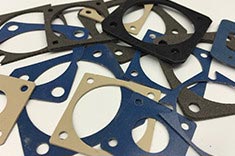EMI Shielding Products
- Custom Gasket Fabrication
- Connector Gaskets
- Bonded O Ring
- Custom Gaskets
- Conduct-O-Knit Knitted Wire Mesh
- Conduct-O-Seal Combo Gasket
- Conduct-O-Elastomer
- Conduct-O-Seal Oriented Wire in Silicone Gasket Material
- Conduct-O-Mesh Tape
- Conduct-O-Foam
- Conduct-O-Bond
- Optical Filters For Electronic Displays
- Shielded Vent Panels
- ESC Board Level Shielding
- 300 Series
How do I Protect Electronic Devices from EMI and Corrosion
Protecting electronic devices from unwanted and harmful EMI waves is an essential part of design and manufacturing. Considering the amount of RFI and EMI all around us, protecting electronics is becoming more and more important. Protecting EMI and RFI devices is important, but so is corrosion-resistant EMI protection. It is not enough to block harmful energy and protect devices from harmful aspects of the environment they are operating within. What happens to your electrical equipment when it experiences extreme dampness? When thinking about EMI RFI shielding, you should also prioritize shielding products that offer corrosion resistance. When materials begin to deteriorate and rust, it almost always affects performance. How can you protect your devices from harmful corrosion?

First, you must consider the surface treatment of the EMI RFI shield. Plating or painting are often seen as the best options for preventing oxidation, corrosion, tarnishing, and rusting. When choosing a finishing option, you need to account for maximum shielding efficiency through corrosion resistance.
Always go with a quality EMI gasket, meaning that you choose a gasket material that allows for cutting back the electrochemical potential variation. Keep in mind that a low galvanic current equates to decelerate the corrosion process. It would help if you considered using silver-plated copper or pure silver because they are materials that ensure corrosion-resistant RFI protection.
EMI RFI Shielding
Adding moisture sealing is also a great option for maximizing EMI and reducing corrosion. Secondary moisture sealing actively works against salt fog and spray from corroding shielding materials. For instance, an aircraft uses a seal-to-seal design as a preferred EMI RFI shielding method.
Related Reading- Three Common EMI Shielding MaterialsTo get the most from your EMI shields, you need to use the best material for your specific application.
- Do RFI and EMI Start with a Circuit
- Three Common Options for EMI RFI Shielding Materials



